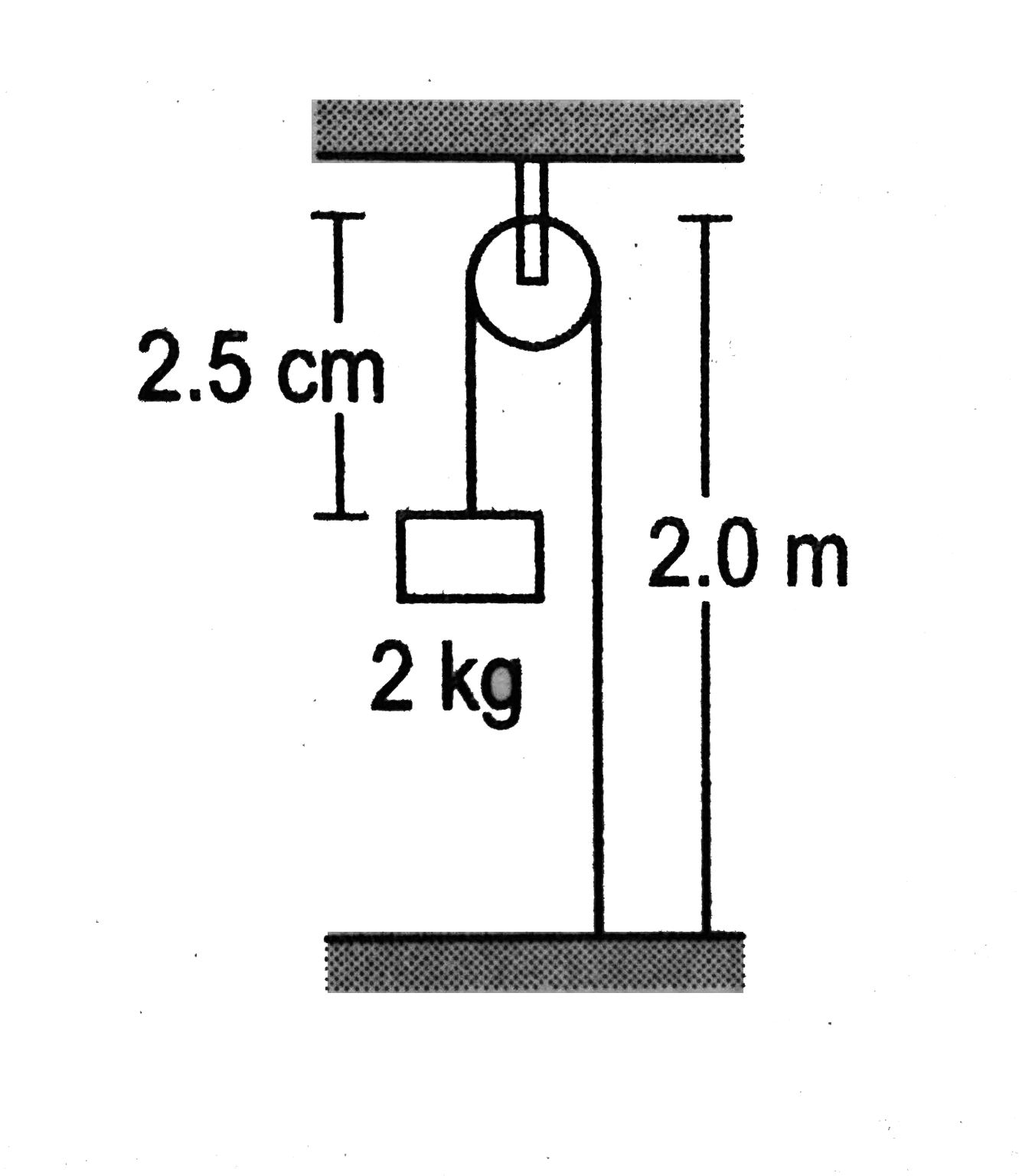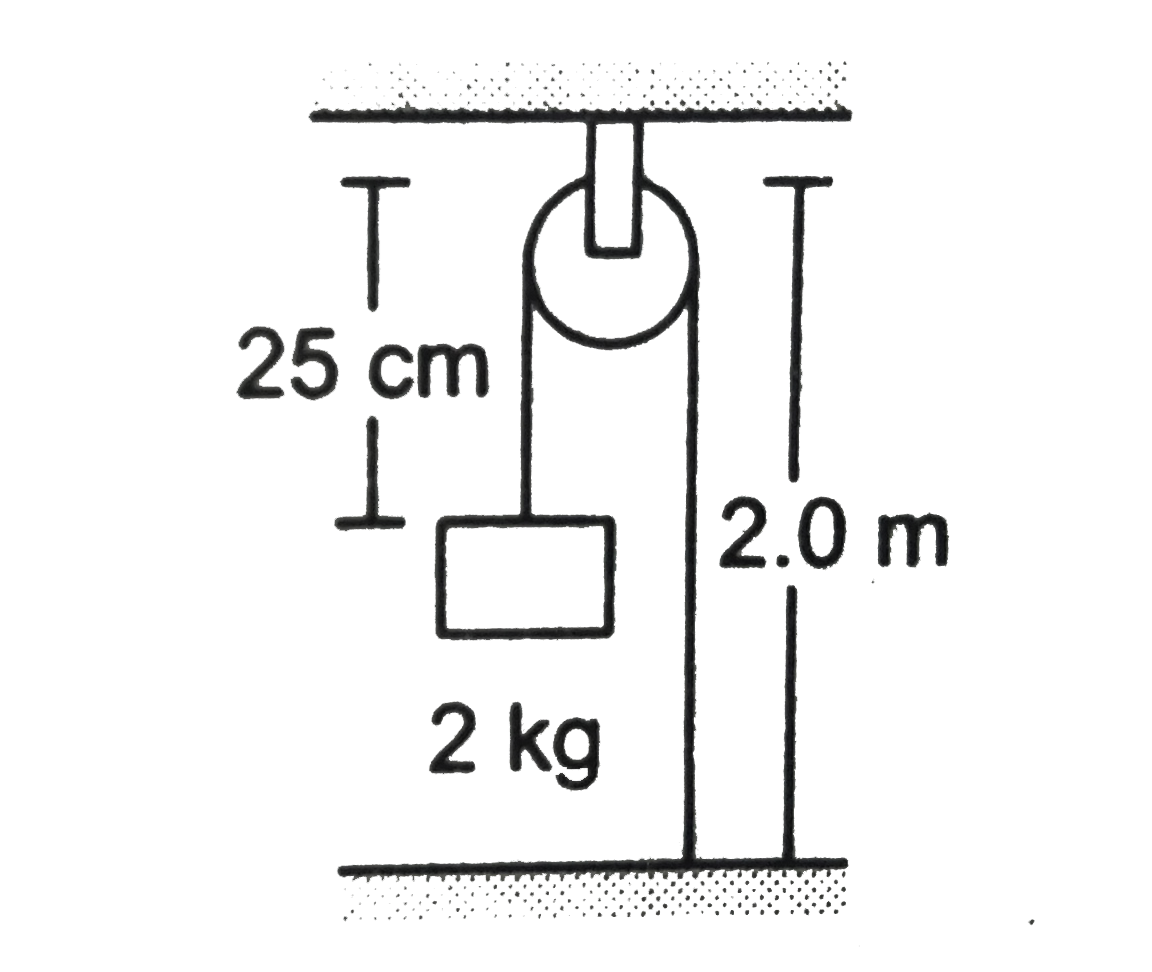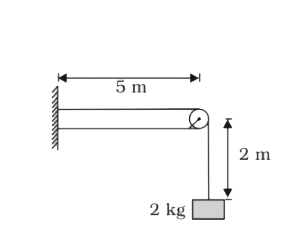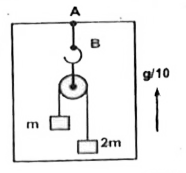In the arrengement shown in figure, the string has a mass of 4.5g. How much time will it take for a transverse disturbance produced at the floor to reach the pulley? Take g=10ms−2.

The correct Answer is:B
v=√Tμ,μ=ml and t = (d)/(v)
Topper's Solved these Questions
- BOOK - DC PANDEYCHAPTER - WAVE MOTIONEXERCISE - Exercise 17.66videos
WAVE MOTION
- BOOK - DC PANDEYCHAPTER - WAVE MOTIONEXERCISE - Level 1 Assertion And Reason10videos
WAVE MOTION
- BOOK - DC PANDEYCHAPTER - WAVE MOTIONEXERCISE - Exercise 17.42videos
WAVE MOTION
- BOOK - DC PANDEYCHAPTER - VECTORSEXERCISE - Medical enrances gallery9videos
VECTORS
- BOOK - DC PANDEYCHAPTER - WORK, ENERGY & POWEREXERCISE - Level 2 Comprehension Based2videos
WORK, ENERGY & POWER
Similar Questions
In the arrangement shown in figure, the string has a mass of 4.5 g. How much time will it take for a transverse disturbance produced at the floor to reach the pulley ? Take g=10ms−2
 .View Solution
.View SolutionIn the arrangement shown in figure, the string has mass of 5kg. How much time will it take for a transeverse distubance produced at the floor to reach the pulley A? Take g=10m/s2.
 View Solution
View Solution
Knowledge Check
- Question 1 - Select One
In figure, the string has a mass of 14 kg. How much time will it take for a transverse disturbance produced at fixed support to reach the pulley?
 A0.91secB1.20secC1.59 secD2.35
A0.91secB1.20secC1.59 secD2.35 - Question 2 - Select One
A first order reaction has specific rate of 10−2s−1. How much time will it take for 20 g of the reactant to reduce to 5 g?
A238.6 sB138.6sC346.5 sD693.0s - Question 3 - Select One
The first order reaction has a specific rate 10−3s−1 How much time will it take for 10 g of the reactant to reduce to 5 g ?
A360 sB180 sC90 sD270 s
In the arrangement shown in figure, the string has mass of 5kg. How much time will it take for a transeverse distubance produced at the floor to reach the pulley A? Take g=10m/s2.
 View Solution
View SolutionA metal ball of mass 5 kg falls from a height of 490 m. How much time will it take to reach the ground ?
View SolutionA first order reaction has a specific reaction rate of 10−2s−1. How much time will it take for 20 g of the reactant to reduce to 5 g ?
View SolutionA first order reaction has a specific reaction rate of 10−2s−1. How much time will it take for 20 g of the reactant to reduce to 5 g ?
View SolutionIn the arrangement shown in the figure the elevator is going up with an acceleration of g/10. If the pulley and the string are light and the pulley is smooth, the tension in the string AB is
 View Solution
View Solution

